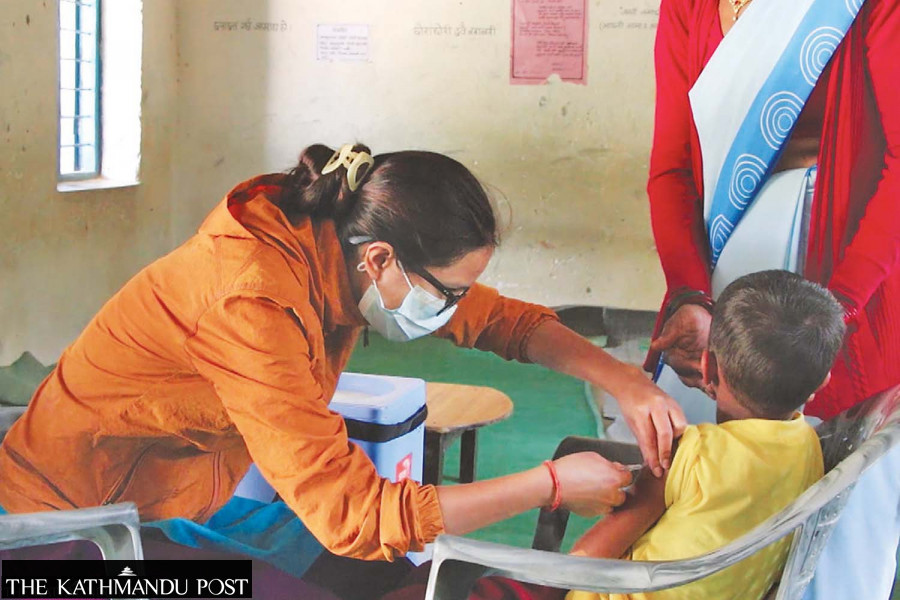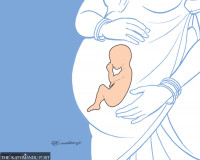Health
Urban areas at greater risk of deadly diseases outbreaks than remote villages
Cities and accessible areas were hit hardest in measles outbreaks in 19 districts last year.
Post Report
Along with Kathmandu, 19 districts throughout the country witnessed measles outbreaks in 2023.
One child died and over 1300 got infected from the deadly virus across the country.
Most of the districts which witnessed the measles outbreak had earlier been declared fully immunised, according to officials.
“We used to think that people residing in remote villages have been deprived of many things including basic health care and also from access to childhood vaccines,” said Keshav Raj Pandit, director at the National Health Education Information and Communication Centre.
“But the reality is exactly the opposite, when it comes to vaccination. Coverage rates of routine immunisation are higher in remote villages than in the supposedly accessible districts and big cities.”
Agencies under the Ministry of Health and Population are set to launch a nationwide measles-rubella campaign starting Saturday aiming to inoculate over 5.7 million children.
Officials said they are concerned about the coverage rate in the big cities and accessible areas, which consistently surpass targets, but still are at a high risk of outbreaks of vaccine- preventable diseases.
Last year, the health ministry launched a nationwide door-to-door campaign to ‘search and inoculate’ children who have missed out on routine immunisation. The move came after a report of the Nepal Demographic and Health Survey-2022 carried out by the ministry showed at least four percent of the children aged 12 to 23 months have not received any of the routine vaccines recommended by the World Health Organisation.
During the campaign, over 2,000 children were identified who had not received any of the 13 antigens, and over 40,000 children were found to have not completed all of their routine vaccines.
The number of children residing in big cities and accessible areas, who were unvaccinated or partially vaccinated, was significant, according to officials.
They said that even the residents from the national capital are hesitant about vaccination and are depriving their children of routine immunisation.
“Firstly, the actual population of big cities is not known, and secondly, there is a huge floating population, whose size remains unaccounted for,” said Dr Abhiyan Gautam, chief of the Immunisation Section of the Family Welfare Division under the Department of Health Services. “Children of people working in brick kilns and those in daily labour, who are more concerned about making ends meet than on vaccination, often miss out on crucial vaccines.”
Health workers say that those residing in slums and squatter settlements are also at risk of missing out on vaccines.
The floating nature of population, migration and lack of awareness on the importance of routine vaccination are the main challenges in the fight against vaccine-preventable diseases, according to them.
Immunisation is universally the most cost-effective and efficient way to control and eliminate vaccine-preventable diseases that contribute to childhood illnesses and deaths.
Meanwhile, the health ministry said that all preparations regarding the measles-rubella campaign have been completed.
Around 5.7 million children from 75 districts will be given the vaccine in the three-week campaign set to start on February 25.
Officials said that immunisation centres will be set up in schools in most of the districts.
The campaign has already been completed in Jajarkot and Rukum West, the two districts worst hit by the magnitude 6.4 earthquake on November 3.
The health ministry said that children between nine months and 15 years from 24 high-risk districts will be jabbed with the measles-rubella vaccine in the campaign. The vaccine will be administered to children between nine months and five years in 51 districts.
Measles is a highly contagious viral disease transmitted through fluids from an infected person’s nose, mouth or throat. It can be potentially deadly for unvaccinated people.
Nepal had committed to eliminating measles by 2023 after missing the earlier deadline of 2019. To declare measles as eliminated, the number of cases should be less than five per 1 million people throughout the year.
Early symptoms, which usually appear 10 to 12 days after infection, include high fever, runny nose, bloodshot eyes and tiny white spots in the mouth. Several days later, rashes develop on the face, upper neck and other body parts.
Measles was once endemic in Nepal, with an average 90,000 cases reported annually from 1994 to 2004.




 15.69°C Kathmandu
15.69°C Kathmandu













